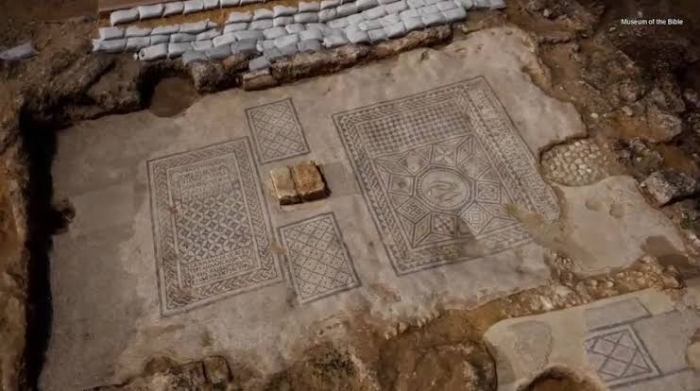
Proof of an ancient garden, aligning with biblical accounts, has been uncovered at Christianity’s most revered site — and according to an archaeologist, “many surprises” from the location are still to come.
A team of archaeologists working at the Church of the Holy Sepulchre—an ancient structure in Jerusalem built over the site believed to be where Jesus Christ was crucified and buried—have recently uncovered traces of ancient grapevines and olive trees. These findings are estimated to be approximately 2,000 years old.
The discovery strongly reflects the verse from the New Testament, “Now in the place where he was crucified there was a garden, and in the garden a new tomb in which no one had yet been laid.” (John 19:41)
Francesca Stasolla, a professor of archaeology at Sapienza University of Rome, confirmed the discovery to Fox News Digital on Wednesday. She stated that the evidence of the ancient garden was identified through seeds and pollen found at the site.
Calvary, where the church now stands, served multiple purposes throughout history, including its use as a quarry in ancient times.
Though the exact age of the organic remains is still being determined, Stasolla explained that the pollen and seeds date back “in between the use of the quarry and the Roman age, when the area had a funerary use.”
“The quarry had to be gradually abandoned and as the stone extraction ended it was used for agricultural areas and tombs,” she said. “This must have been what it looked like in the 1st century A.D.”
She also shared that a wide range of artifacts have been unearthed during the excavation, some dating back as far as the Iron Age—highlighting the site’s longstanding role as a pilgrimage destination since the fourth century.
“Ceramics, metals, glass… [all] document both the occupation of the area and the presence of believers and pilgrims,” she noted.
“The excavation’s [aim is to gain] knowledge [about this] significant area of the city of Jerusalem.”
“And this is what it is giving back,” she added. “An area that, from a certain moment on, becomes central in the Christian cult.”
According to the Times of Israel, which first reported the findings, this is the most significant restoration project to take place at the Church of the Holy Sepulchre in nearly 200 years. Stasolla stated that the excavations are occurring “in all areas of the church common to the religious communities.”
Founded in 326 A.D., the church’s original structure was destroyed in 1009 A.D. by the Islamic ruler al-Hakim bi-Amr Allah.
Nearly a century later, Christian Crusaders regained control of the site, and Stasolla explained that the current building is primarily the result of their reconstruction efforts.
“The current church is that of the Crusader reconstruction, but the whole church is a composition of historical phases from the fourth century to the modern age,” she described.
When asked if the discovery aligns with John 19:41, Stasolla acknowledged the similarity, but emphasized the difference between archaeological evidence and theological interpretation.
“Archaeology provides us with data that must then be historicized and interpreted,” she said. “In this case, it documents an agricultural use of the quarry… [the Bible quote] is certainly suggestive [of this].”
She also emphasized that the excavation remains ongoing, and that it is likely to reveal further significant findings.
“It is certainly a strategic excavation for the knowledge of the development of the city and its process of sacralization in a Christian key,” she said.
Share your story or advertise with us: Whatsapp: +2348033202396 Email: sentinelnewsng@gmail.com








